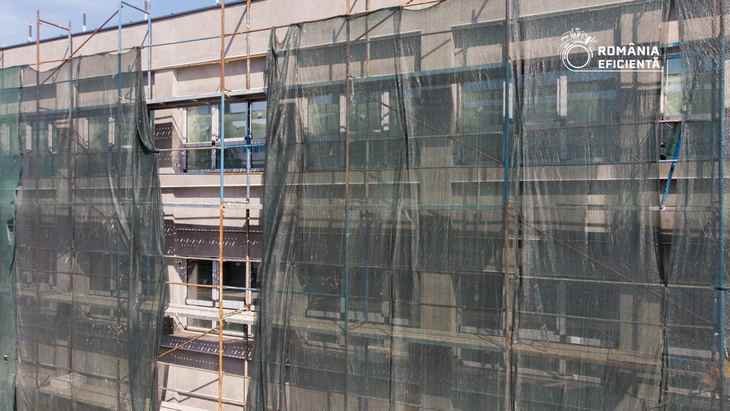In Romania, the educational infrastructure is still based on old buildings. They generate a series of challenges related to indoor air quality, lighting, noise level, humidity, or ensuring a comfortable temperature. In-depth renovations of educational facilities can greatly improve these aspects, which will be reflected in increased well-being and learning performance of students. Efficient Romania invests in the energy rehabilitation to the latest standards of such buildings, which then become models at national and regional level for similar projects.
“Apart from homes, schools are where young people spend most of their time. Therefore, a comfortable and healthy environment is absolutely necessary for their well-being and productivity. The renovation of educational units in Romania must lead not only to the reduction of high energy costs, but also to solve another major problem: the quality of the indoor environment in these buildings. Efficient Romania has proposed that, through the high-standard energy renovations it carries out in selected schools at national level, to create models that demonstrate how much the conditions in which students learn can be improved and, implicitly, the comfort and state of good for the children,” says Radu Dudău, director of the Energy Policy Group and coordinator of the Efficient Romania project.
Increasing the quality of the indoor environment – which means thermal comfort, indoor air quality, acoustic and visual comfort – must be considered a priority in national school renovation plans. Research in the field has shown how much these parameters influence the well-being and even the health of students.
If we refer to thermal comfort, often the temperature in schools that are not energy efficient cannot be ensured at the optimal level for the students’ well-being. Some classrooms are either damp and cold or overheated, especially in the warm months or in winter, where the heating systems work poorly. Modeling by the European Building Performance Institute (BPIE) shows that, in a temperature range between 20°C and 32°C, every 1°C reduction in building temperature increases student learning performance by 2.3 % (source, here).
Regarding indoor air quality, reducing indoor CO2 concentration leads not only to fewer medical absences, but also to improved learning performance. When the concentration of CO2 in the room is too high due to the low ventilation rate, in addition to the unpleasant odors in the classrooms, students feel tired, sleepy and have a decreased ability to concentrate. Another important aspect that must be monitored is the humidity level in the rooms, which is considered optimal to be 40-60%, depending on the outside temperatures.
Regarding acoustic comfort, especially for schools located in cities, noise pollution from outside can be a real problem. In addition, the reduction of noise in areas where outdoor activities are carried out, such as sports, contributes to better concentration of students and increased learning performance. The energy rehabilitation of the school building can almost completely eliminate the external noise and mitigate the noise inside.
Good natural light, in addition to reducing energy demand, can increase attention, concentration and relaxation, leading to improved school performance by up to 18%, according to BPIE research. Also, the lighting system must be efficient, of high quality and provide visual comfort.
Schools renovated to nZEB standard, efficient and healthy
The in-depth renovation works, to nZEB (nearly zero energy building) standards, carried out through the Efficient Romania program at the “Elie Radu” Energetic Technological High School in Ploiești, completed in April 2022, but also at the “Liliesti” Secondary School in Băicoi (Prahova county), where they are close to completion, I emphasize all these aspects related to ensuring a quality indoor environment.
The work of thermal insulation of the external walls and installation of energy-efficient windows will not only reduce heating bills, but will help to maintain a better temperature in the classrooms and, at the same time, reduce external noise. The modernization of indoor heating installations (pipe networks and radiators) leads to more efficient thermal energy consumption and to achieving an adequate temperature in classrooms that were previously either too cold or overheated.
By installing sunshades on strongly sunny windows, the absorption of solar heat through the glazed surfaces of the classrooms, especially those with exposure on the southern side, is mitigated. For good indoor air quality and a controlled temperature, Romania Eficiente has installed air filtration equipment with heat recovery. Visual comfort is ensured by modernizing the lighting system by replacing the existing fluorescent and incandescent lighting fixtures with LED ones.
